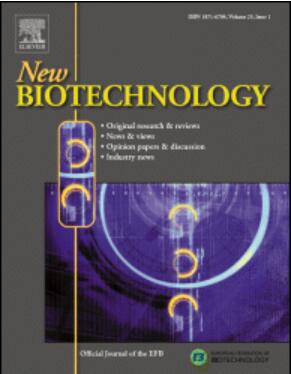欧洲的微藻部门:迈向可持续的生物经济。
IF 4.5
2区 生物学
Q1 BIOCHEMICAL RESEARCH METHODS
引用次数: 0
摘要
微藻是一组多样化的光合微生物,可用于生产可持续的食品和饲料产品,减轻环境污染,或隔离二氧化碳以减缓气候变化等用途。为了优化资源利用和整合工业废水流,必须考虑微藻种类和菌株的生物学和培养参数,以及所采用的培养系统和加工技术等因素。本文综述了微藻(包括蓝藻)的主要商业应用,并探讨了对微藻生物量及其衍生化合物的可持续加工至关重要的生物学和生物技术方面。我们还提供了一个最新的概述微藻部门在欧洲考虑菌株,栽培系统和商业应用。我们已经确定了来自66家欧洲微藻生产商的146种不同的微藻衍生产品,以及49家提供服务和技术的公司,例如微藻生产的优化和可扩展性。种植最广泛的微藻是螺旋藻(Limnospira spp.),其次是小球藻(Chlorella spp.)和纳米绿藻(Nannochloropsis spp.),主要用于人类消费和化妆品。在欧洲,首选的栽培系统是光生物反应器。最后,我们讨论了在工业规模上生产微藻的物流和监管挑战,特别是在欧盟,并讨论了新的基因组技术和生物处理在微藻领域促进可持续生物经济的潜力。本文章由计算机程序翻译,如有差异,请以英文原文为准。
The microalgal sector in Europe: Towards a sustainable bioeconomy
Microalgae are a diverse group of photosynthetic microorganisms that can be exploited to produce sustainable food and feed products, alleviate environmental pollution, or sequester CO2 to mitigate climate change, among other uses. To optimize resource use and integrate industrial waste streams, it is essential to consider factors such as the biology and cultivation parameters of the microalgal strains, as well as the cultivation system and processing technologies employed. This paper reviews the main commercial applications of microalgae (including cyanobacteria) and examines the biological and biotechnological aspects critical to the sustainable processing of microalgal biomass and its derived compounds. We also provide an up-to-date overview of the microalgal sector in Europe considering the strain, cultivation system and commercial application. We have identified 146 different microalgal-derived products from 66 European microalgae producers, and 49 additional companies that provide services and technologies, such as optimization and scalability of the microalgal production. The most widely cultivated microalga is ‘spirulina’ (Limnospira spp.), followed by Chlorella spp. and Nannochloropsis spp., mainly for human consumption and cosmetics. The preferred cultivation system in Europe is the photobioreactor. Finally, we discuss the logistic and regulatory challenges of producing microalgae at industrial scale, particularly in the European Union, and explore the potential of new genomic techniques and bioprocessing to foster a sustainable bioeconomy in the microalgal sector.
求助全文
通过发布文献求助,成功后即可免费获取论文全文。
去求助
来源期刊

New biotechnology
生物-生化研究方法
CiteScore
11.40
自引率
1.90%
发文量
77
审稿时长
1 months
期刊介绍:
New Biotechnology is the official journal of the European Federation of Biotechnology (EFB) and is published bimonthly. It covers both the science of biotechnology and its surrounding political, business and financial milieu. The journal publishes peer-reviewed basic research papers, authoritative reviews, feature articles and opinions in all areas of biotechnology. It reflects the full diversity of current biotechnology science, particularly those advances in research and practice that open opportunities for exploitation of knowledge, commercially or otherwise, together with news, discussion and comment on broader issues of general interest and concern. The outlook is fully international.
The scope of the journal includes the research, industrial and commercial aspects of biotechnology, in areas such as: Healthcare and Pharmaceuticals; Food and Agriculture; Biofuels; Genetic Engineering and Molecular Biology; Genomics and Synthetic Biology; Nanotechnology; Environment and Biodiversity; Biocatalysis; Bioremediation; Process engineering.
 求助内容:
求助内容: 应助结果提醒方式:
应助结果提醒方式:


